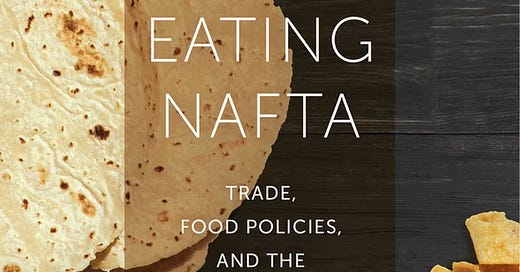end of the month roundup: February 2025
Let's talk more about tariffs (this time it's about your food cans); plus, a book recommendation!
Is it just me or did February go by in a blink? The silver lining in that is that Spring is (hopefully) right around the corner. Based on the weather in NYC this week, I’m optimistic for warmer and sunnier days. Now, to recent events..
To tariff or not to tariff? That is the question
There has been lots of discourse since the new administration took office over whether tariffs would go into place on Mexico, Canada, and China and what the impacts will be to the American consumer. We detailed a bit of our POV in last months’s roundup (check it out here) ahead of the originally proposed February 1 tariff enactment date. While the administration pressed “pause” on tariffs for February, it now looks like these may be a reality starting on March 4th…or April. Let’s just say the timing is up in the air right now.
What does seem to be a bit more solidified is another tariff proposal currently slated for mid-March: a 25% tariff on both imported steel and aluminum. While this isn’t new for steel - President Trump enacted a 25% tariff on imported steel in 2018 - tariffs on aluminum were only 10%. There were also many exemptions on those tariffs at that time and duty free quotas were enacted. This new proclamation does away with that.
So what does this have to do with food? Your favorite soups, beans, and beer all come in containers using steel and aluminum. According to the Can Manufacturers Institute, roughly 70% of the tin mill steel used to make steel food cans in the U.S. comes from foreign sources. For aluminum, imports account for only 10% of the aluminum used by American can-makers. Thus, particularly for steel, if companies cannot shift their sourcing to domestic suppliers, then consumers may be bearing the cost. Another potential negative impact would be if companies switch to alternate materials, such as plastic, to circumvent additional fees on steel and aluminum. According to a recent earning’s call, James Quincey, Coca-Cola's chairman and CEO, suggested that the company may switch to adopting even more plastic packaging. Given the existing issues around single-use plastic waste coupled with rising concerns over the adverse health impacts of microplastics, that is certainly not an answer inspiring consumer confidence. Should these tariffs go into place, the hope is that American steel and aluminum can pick up the slack from foreign supplies to keep prices steady. It remains to be seen how this will truly shake out.
This month’s reading and viewing highlights
What I read
Highly related to the topic of tariffs…if you want to get a better understanding of our food system and how it’s so deeply intertwined with Mexico, I highly recommend Eating NAFTA by Alyshia Gálvez (paid link), which I just read this month. Gálvez’s writing expertly details the impact that the North American Free Trade Agreement (NAFTA) had on one of the most fundamental elements of Mexican (or any) culture: food and sustenance.
NAFTA and globalization brought a spotlight to the incredible cuisine Mexico has to offer yet paradoxically, the people who historically created and survived on that cuisine can no longer afford to eat that way. What was originally shunned as poor, indigenous cuisine is now revered worldwide in some of the world’s finest (and priciest) kitchens. As a result of these trade agreements, the Mexican market flooded with cheap American corn (not in the nice heirloom variety, but the high-fructose corn syrup one). Diet-related illness replaced hunger as a major health risk.
“We can see that the rise in diet-related illness and obesity in Mexico following the free trade agreement …it is not a coincidence, but rather a logical outcome of NAFTA. We can see this looking through the lens of foreign direct investment in food industries alone: US companies invested twenty-five times more in Mexico’s food industry in 1999 than 1987, with three-quarters of that investment in the arena of processed food production. And from 1995 to 2003, sales of processed foods expanded 5 to 10 percent each year in Mexico.”
- Eating NAFTA (p. 100)
Long story short - it’s a very well written book that takes trade policy and its impacts and makes it very easily digestible (food systems pun!). Check it out and let me know what you think.
What I watched
I may be late to the party on this one, but I finally got around to watching Chef’s Table: Noodles on Netflix this month! As someone who loves noodles, seeing the precision and art of the noodle craft documented across four different chefs from around the world was an enjoyable watch. It certainly got the travel bug going in me again but in the meantime, I’ll settle for doing some homemade noodle nights at home.
That’s all for now, folks! We’ve got some busy weeks ahead (yay, moving!) so the {unprocessed} front may be a bit quieter the first half of the month. Drop a comment below to let us know what you want to hear about next.
P.S. - should we start an {unprocessed} book club?





